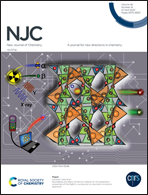Dual quinoline-hybrid compounds with antimalarial activity against Plasmodium falciparum parasites†
Abstract
Although we have at our disposal relatively low-cost drugs that can be prescribed for the treatment of malaria, the prevalence of resistant strains of the causative parasite has required the development of new drugs. Also, malaria parasite infection is associated with different symptoms such as inflammation. Thus, the development of dual pharmaceuticals is a promising strategy for malaria treatment. In this work, we prepared and evaluated four dual hybrid 4-aminoquinoline compounds (GIQ, TOQ, DEQ, and IBUCEQ) with potential antimalarial and anti-inflammatory activities. All compounds are mono-N-substituted 4-aminoquinolines that have been easily synthesized. Most of the compounds are demonstrated to be active against Plasmodium falciparum 3D7, with DEQ being the most active hybrid (nanomolar range), exhibiting a selectivity index (SI) value higher than 3. By contrast, DEQ presented a high resistance index (RI) value when it was evaluated against the Dd2-multiresistant strain. Then, the compounds IBUCEQ and TOQ were found to be the most promising candidates, based on their RI values. The anti-inflammatory and antioxidant activity of these compounds were also analyzed and most of them present both properties, suggesting that these quinoline-hybrid compounds could also alleviate malaria infection symptoms by decreasing the inflammatory and oxidative overstimulation.



 Please wait while we load your content...
Please wait while we load your content...